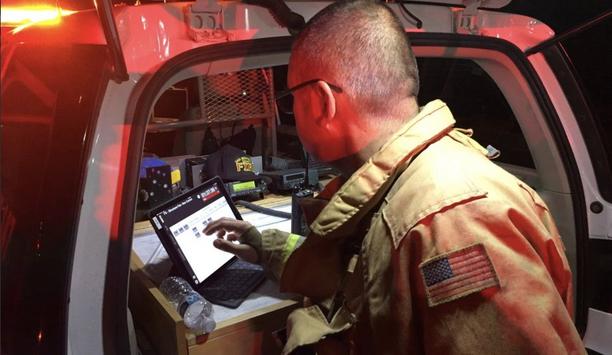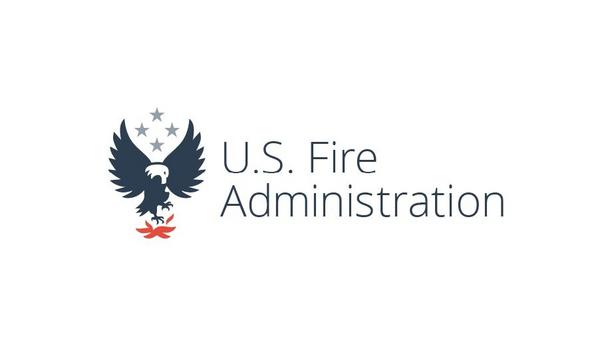National Institute for Occupational Safety and Health News
As one of the most recognized and treasured pieces of firefighting safety equipment, the fire helmet stands as a point of pride and tradition in the fire service. MSA Safety, Inc. launches the new MSA Cairns® 1836 Fire Helmet. In the North American fire service market, the Cairns 1836 is one of the lightest weight traditional-style fire helmets available that meets National Fire Protection Association (NFPA) standards. Cairns 1836 features The Cairns 1836 features a reduced ri...
Chemicals broadly labeled as PFAs provide important properties to turnout gear used by firefighters, including better resistance to heat, water, and other hazards. Unfortunately, human exposure to per- and poly-fluoroalkyl substances (PFAs) has also been linked to heightened cancer risk. Research on the concentration of PFAs The U.S. National Defense Authorization Act of 2021 directed the National Institute of Standards and Technology (NIST) to identify the prevalence and concentration of PFAs...
As a company officer, the day will come where you and your crew are first to arrive at what looks like the beginning of a major incident. Your Battalion Chief (BC) is delayed or diverted to other incidents, so YOU are the Incident Commander (IC). How you set the table for this incident with regard to quickly setting up the Incident Command System (ICS) is critical. And how you use your channels of communication, including the ways you communicate, will be crucial to your success. Before we jump...
The National Institute for Occupational Safety and Health (NIOSH) and the National Personal Protective Technology Laboratory (NPPTL) has posted 2 user notices that may impact certain respirators used by fire and emergency medical services providers. The NPPTL issued a May 2022 notice PDF for 3M Scott SCBA Air-Pak models manufactured between Nov. 1, 2019 and April 12, 2022. 3M Scott has received reports on the Air-Pak X3, Air-Pak X3 Pro and X3-21 Pro models referencing the primary and/or secon...
The National Institute for Occupational Safety and Health's (NIOSH) National Personal Protective Technology Laboratory (NPPTL) has posted 2 user notices that may impact certain respirators used by fire and emergency medical services providers. 3M Scott SCBA The NPPTL issued a May 2022 notice PDF for 3M Scott SCBA Air-Pak models manufactured between Nov. 1, 2019 and April 12, 2022. 3M Scott has received reports on the Air-Pak X3, Air-Pak X3 Pro, and X3-21 Pro models referencing the primary and/...
One of the most important aspects of firefighter post-incident rehabilitation is mitigating heat stress. Firefighters work in high-heat conditions and personal protective equipment (PPE) carries a high-heat burden. Exposure to extreme heat situations usually occurs in limited, short doses for most firefighters but the effects of high heat on personnel are cumulative. Extreme heat from environmental conditions adds significantly to the risk of heat-related health emergencies. Acute risks The l...
Firefighting is among the riskiest professions, and cancer is one of the biggest related medical risks. Fortunately, research is ongoing to better understand the nature of the cancer risk, new protective equipment and practices are evolving to manage the risk, and support is available for cancer survivors and families. Cancer is the leading cause of death among firefighters, who are at greater risk of some cancers than the public. Hazardous substances in the firefighting environment include doz...
After the invasion of COVID-19, N95 masks have become one of the most important protective gear. Experts in health and well-being have continuously recommended N95 and FFP2 masks for being ideal against the COVID-19 virus and are considered effective against airborne droplets and particles. The FFP2 and N95 masks are certified as compared to surgical masks and ordinary cloth because of their design to fit very close to the face and are effective in filtering out maximum airborne particles. Fak...
As the World braces for another rapidly advancing mutating version of COVID-19, face masks are being used to reduce the chance of spreading or capturing COVID-19 once again. To limit the spread of the virus as much as possible, countries across the world are advising their citizens to consider making mask use mandatory both outdoors and indoors. As the world starts enforcing limited lockdowns it's important to understand the differences between various types of face masks. Three types of...
A natural part of business is allocating and reallocating investments and resources into various areas. And, often, each department is asked to achieve more with less, pioneering to difficult decisions in order to achieve business goals. One key area where there can’t be any compromise is protecting workers from accidents, injuries, and illnesses while they’re on the job. When creating a safety plan for lone workers, companies often need to broaden their definition of what a lone wo...
While wildfires can be beneficial and necessary for some species and ecosystems, there are various negative impacts on our air, water, and land, as well as, subsequent impacts for human health. Given the U.S. Environmental Protection Agency’s (EPA) mission to protect human health and the environment, the EPA’s Wildland Fire Research focuses on the impacts these fires have on human health and ecosystems. Examining ambient air quality EPA researchers are examining the worsening of a...
It’s tougher to beat the heat on job sites than at backyard barbecues. Teammates need to be informed and equipped to take preventative measures against heat stress, such as finding shade, drinking plenty of water, wearing loose and light clothing, and/or taking regular breaks. Heat-related occupational Risks Safety professionals know that exposure to hot conditions presents a real threat to teammates. According to the most recent U.S. Heat Fatalities Map from the Occupational Safety and...
Global safety equipment manufacturer, MSA Safety Incorporated has announced that its next-generation Advantage 290 LS Air-Purifying Respirator (APR) is the first of its kind, designed without an exhalation valve, to receive approval from the National Institute for Occupational Safety and Health (NIOSH). Advantage 290 LS APR An elastomeric half-mask device, the Advantage 290 LS Respirator covers a wearer’s nose and mouth and utilizes twin filters to provide respiratory protection. The U....
There are many different types of liquid smoke out on the market, but like most other products, they vary in quality. LION Group’s mission is to keep fire fighters and instructors safe and healthy during training. The company’s smoke liquid produces virtually no traces of toxins or harmful chemicals so the individual and their training team can train as hard as they want without having to worry about any health risks. The National Institute of Occupational Safety and Health recently...
Diesel exhaust emissions can spread toxic gases and soot particles throughout a firehouse anytime a diesel-fueled engine is operated. When diesel fuel is burned, it produces polycyclic aromatic hydrocarbons and diesel soot. Both of these substances are classified as carcinogens. Ultrafine particulate can penetrate deep into the lung and is absorbed through the skin, carrying toxins into the bloodstream. Exposure to this type of pollution can increase the risk of developing cancer, and respirato...
The National Fire Protection Association (NFPA) released its annual “U.S. Firefighter Fatalities in the United States” report, which showed a total of 64 U.S. firefighter fatalities while on duty in 2018. This continues a five-year trend of fewer than 70 deaths per year. It is also the eighth time in the last 10 years that fewer than 70 on-duty deaths have occurred; the death toll is half what it was in the first five years that NFPA conducted this study. Of the 64 fatalit...
NFPA’s 2017 U.S. Firefighter Fatalities report reflects lowest on-job deaths in 40 years The National Fire Protection Association (NFPA) released its annual U.S. Firefighter Fatalities report, which showed a total of 60 U.S. firefighter fatalities while on duty in 2017. This number represents the lowest total reported since 1977, when NFPA began reporting on-duty firefighter fatalities; it is the sixth time in the last seven years that the total has been below 70 deaths....
Browse fire protection news
The New Future For Fire Agencies
DownloadThe Eight Key Trends in Fire Detection in 2023
DownloadA Digital Platform to Improve Fire Safety Compliance and Inspections
DownloadOvercoming the Challenges of Fire Safety in the Paper Industry
DownloadCarbon Monoxide: Creeping Killer Caught In The Act
Download


















